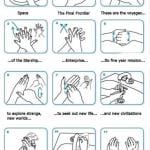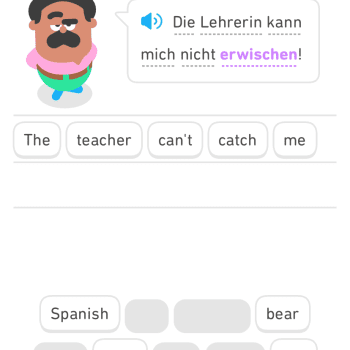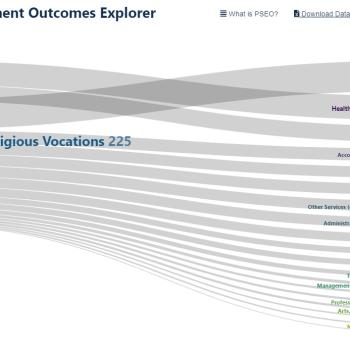 Many, many universities and colleges are shifting to online teaching in response to the coronavirus pandemic. Those of us who have taught online in the past know that the preparation to deliver a quality course in this format is laborious and takes time. But sometimes circumstances require us to (as an article in the Chronicle puts it) go online in a hurry, or as their new tutorial phrases it, preparing for emergency online teaching. Inside Higher Education also has an article with the same focus, and a collection of links to relevant articles. So too does Canvas and another LMS provider Brightspace.
Many, many universities and colleges are shifting to online teaching in response to the coronavirus pandemic. Those of us who have taught online in the past know that the preparation to deliver a quality course in this format is laborious and takes time. But sometimes circumstances require us to (as an article in the Chronicle puts it) go online in a hurry, or as their new tutorial phrases it, preparing for emergency online teaching. Inside Higher Education also has an article with the same focus, and a collection of links to relevant articles. So too does Canvas and another LMS provider Brightspace.
The Center for Academic Technology at Butler University has created a website to help, calling it Keep Calm and Teach On. Other universities have done something similar. Our university president has been messaging students regularly via email, and Butler University has created a web page specifically for coronavirus updates. There are new Facebook groups being created, such as one called “Pandemic Pedagogy.” Individual bloggers like Tony Keen have shared tips and hints, as have organizations like HASTAC. Many professors are worried that providers of tools they plan to use, whether their LMS or Zoom or something else, may not hold out when used so intensely. Workers in China found this to be true. But not every course should be just what was originally planned conducted via Zoom. That doesn’t work for most online courses even under less difficult circumstances, although it might be the best option for some. Ideally, even under the constraints of time available, you should ask yourself what mode of delivery is optimal and what online mode of delivery can match or exceed that, if any, and if none can meet that high standard, then which approach comes closest and sacrifices the least of what you hope for. Keep in mind that I once thought that certain things would be lost moving to online, such as discussion, and instead I found the online format to be better in at least certain important respects.
What else can you do, in addition to consulting the links embedded above? Here’s more. First, definitely read this:
Next, please keep in mind that not everyone will have the same internet access, devices, or home context that facilitates learning. IHE also has a piece on why different colleges are taking different measures in response to the pandemic.
You might want to incorporate learning about pandemics from the past if you are teaching a course about history. There is an online encyclopedia focused on the flu epidemic of a century ago, called Influenza Archive. You could also highlight the potential of gamification in such a context. And if you are playing a Reacting to the Past or similar game, RTTP also has resources to help.
Think about different learners in all kinds of ways. I’ve been thinking a lot lately about a student who had dyslexia who took my course. Our Student Disability Services office knew, but I didn’t, until too late. I was supportive, but I know a colleague of mine assumed the student was just a jock who didn’t care, not a student eager to learn who struggled with reading. Think seriously about text-based readings. Think about fonts. Provide supplementary materials in other media, such as online documentaries and podcasts, as well as audiobooks (whether of the assigned textbook or an alternative). Add closed captioning to your videos. I’ve also been thinking about hearing impairment (due to someone in my Sunday school class which consists of a group of adult learners, but hearing loss can affect all ages). See the Chronicle article about using a microphone generally for the benefit of those with a hearing impairment. And for this specific situation of moving online, if you record yourself, seize the opportunity to listen to how clearly you speak and if necessary to work on improving. Many of us are oblivious to just how hard we are to understand until we listen to ourselves recorded. Students of all sorts may struggle as a result. They have also been struggling in your face to face classes, but this is a good opportunity to do something about it in the short as well as the longer term. Who knows, perhaps you will start podcasting your lectures regularly as a result, for more than one reason!
Here are other resources that may be useful, some of which I already had in a draft post that I imagined would be about disabilities, inclusivity, and open educational resources, rather than a response to a COVID-19 pandemic emergency:
Teaching Resources for Times of Disruption
Online Learning Consortium Emergency Preparedness Resources
Teaching Tuesday: Integrating OERs in a Western Civilization 1 Class
https://www.thetechedvocate.org/how-to-choose-the-best-instructional-design-tools/
http://learningaloud.com/blog/2019/12/03/podcasts-and-audiobooks-vs-kindles-and-books/
Brown Teaching Continuity Guide
How to be a better online teacher
Some have been assembling guides and resources for specific content and subject areas:
Guide to remote music education
From the Wabash Center and thus for Religious Studies, “Translating Religion Courses to an Online Format.”
https://www.wabashcenter.wabash.edu/resources/teaching-online/
Higher education is not the only field or industry concerned about this. And finally, for those who find laughter to be the best medicine, McSweeney’s offers BINGO for those working from home at present.













